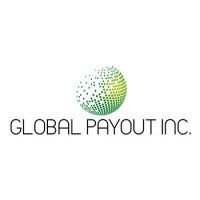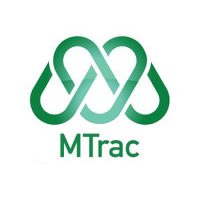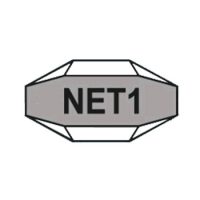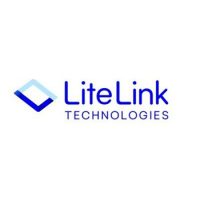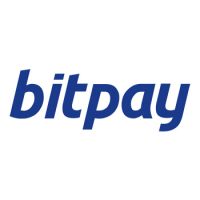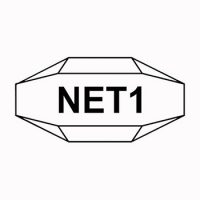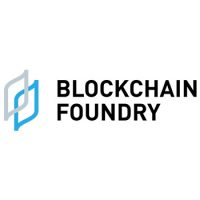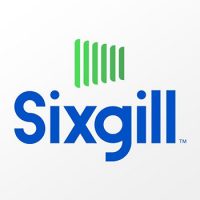Blockchain Press Releases
IDTechEx Discusses 4 Ways to Eliminate Rare Earths in EV Motors and One You Haven’t Heard

BOSTON, Aug. 14, 2023 /PRNewswire/ — The use of rare earths in various modern technology has drawn attention over the years. But with the rising demand for electric vehicles (EVs), the issue has been brought to the fore. 82% of the electric car market in 2022 was using electric motors based on rare earth permanent magnets. China largely controls the supply of rare earths, and this has led to significant price volatility in previous years, with a large spike in 2011/2012 and a big rise between 2021-2022. Crucially, in comparison to some other technologies, several methods can be used to eliminate the use of rare earths in electric motors, which will be outlined in this article along with the pros, cons, and adoption.
This article is based on IDTechEx’s latest “Electric Motors for Electric Vehicles 2024-2034” report that analyses different motor technologies for performance, materials, market adoption, and future potential.
To briefly describe the construction of an electric motor, a stationary part (stator) has coils of metal (typically copper) fed by an electric current to generate a magnetic field. This field will then turn the rotating part of the motor (rotor). In a rare earth permanent magnet (PM) motor, the magnets are located on the rotor.
1. The Induction Motor
In an induction motor (or asynchronous motor), the rotating magnet field produced by the stator induces currents on the rotor, which in turn produces a magnetic field that is attracted/repelled from the radial field of the stator windings. The induction motor uses copper or aluminum bars or windings on the rotor. These motors typically present good peak power and torque density over short periods but can prove challenging to thermally manage and typically have lower efficiency than PM options.
Induction motors have been common in the EV market, being the primary choice of Tesla until the release of the Model 3 (which adopted a PM design). In the car market, some proponents remain, such as Audi and Mercedes, but induction motors are now largely used as a secondary motor, used for acceleration boosts as they do not create drag when not in use, eliminating the need for a decoupler.
2. The Wound Rotor Motor
Also known as an externally excited synchronous motor (EESM), the wound rotor synchronous motor (WRSM) replaces the magnets on the rotor with coil windings that can be fed with a DC current to generate a magnetic field. This has the advantage of being able to control both the stator and rotor field. The downsides are the additional manufacturing steps required to add windings to the rotor and brushes are needed to transmit power to the rotor. These motors have historically also had poorer power and torque density, but modern versions are comparable with PM motors.
Renault was an early proponent of this technology in the Zoe, but now BMW and Nissan have adopted this design, and tier 1 MAHLE has presented a version with wireless power transfer to the rotor, eliminating the brushes.
3. The Switched Reluctance Motor
Switched reluctance motors (SRMs) are potentially the most simple to construct, with the rotor largely being constructed of steel. The steel of the rotor has low reluctance compared to the air around it, so magnetic flux preferentially travels through the steel while attempting to shorten its flux path, rotating the rotor. Despite their simplicity and reliability, SRMs have typically been plagued with poorer power and torque density with other issues, including torque ripple and acoustic noise.
While SRMs have largely been confined to more industrial or heavy-duty applications, significant efforts are going into their development for EVs. Companies like Turntide Technologies have added more rotor and stator poles and come up with more sophisticated control systems to overcome traditional issues. UK-based Advanced Electric Machines have developed a new type of motor with a segmented rotor that remains simple in construction but is said to eliminate the acoustic noise and torque ripple while improving power and torque density; this design is the center of a project alongside Bentley.
4. Alternative Magnetic Materials
While many OEMs have steadily reduced the rare earth content of their motors, Tesla gained much interest by saying that its next-generation drive system will be a PM motor without rare earths. There are several ongoing projects to develop rare earth free magnets that can compete on magnetic performance; these are at varying levels of commercialization.
The problem with alternative magnetic materials is that their magnetic performance is generally much worse. For example, some manufacturers that make rare earth and ferrite magnet motors show a reduction in power by 50-70% for ferrite version of the same size motor, meaning that to match performance, much more magnetic material and/or a much larger motor is required.
Proterial has developed magnets with magnetic properties that it states “deliver the world’s highest levels among ferrite magnets”. The motor design only requires 20% more magnetic material to keep the motor power density the same. Niron Magnetics are developing iron nitride magnets, and its next-generation versions are planned to compete with neodymium performance. PASSENGER is a European project developing strontium ferrite and manganese aluminum carbon alloys. While efforts are underway, materials with a truly comparable performance are still some ways into the future; however, with other changes to the motor design, they might not need to.
5. A High Speed Ferrite Motor with Further Optimizations
While the adoption of ferrite magnets would significantly reduce motor performance, optimizing many other motor features could minimize this impact. Australian technology company Ultimate Transmissions has submitted a patent for a ferrite motor design that it believes could be one route Tesla could take to eliminate rare earths in a PM motor.
The design uses much larger ferrite magnets and higher speeds (20,000rpm) to achieve comparable power to a similarly sized rare earth PM motor. One challenge comes from containing the magnets effectively in the rotor; a potential solution would be using a carbon fiber wrap on the rotor (a technology Tesla has already demonstrated in its Plaid vehicles). Another challenge is that the ferrite magnets would need to be heated for optimal operation, the opposite issue faced by neodymium magnets, but not unachievable.
It should be noted that this design is still in the simulation phase, and Tesla could well be taking a different approach, such as its own alternative magnetic materials. But in simulations, this approach has shown similar power, reduced costs, and reduced weight at the expense of slightly reduced torque and a longer stack.
IDTechEx predicts a significant rise in rare earth free motor technologies. Source: IDTechEx
Conclusions for the Future
There is an increasing focus, especially outside of China, on reducing the rare earth content of electric motors. There are several strategies, each with its own trade-offs and opportunities for motor manufacturers and material suppliers. IDTechEx is predicting that rare earth PM motors will remain the dominant technology, largely thanks to China’s dominance in the EV market and other mines starting to come online worldwide. However, it anticipates that rare earth free options, including those mentioned above, will account for nearly 30% of the market in 2034.
IDTechEx’s latest iteration of “Electric Motors for Electric Vehicles 2024-2034” takes a deep dive into motor technology, market adoption, material utilization, and market forecasts. It draws from a large database of vehicles and motors across vehicle segments, including cars, buses, trucks, vans, 2-wheelers, 3-wheeler, microcars, and aircraft.
To find out more about this report, including downloadable sample pages, please visit www.IDTechEx.com/motors.
About IDTechEx
IDTechEx guides your strategic business decisions through its Research, Subscription and Consultancy products, helping you profit from emerging technologies. For more information, contact [email protected] or visit www.IDTechEx.com.
Images download:
https://www.dropbox.com/scl/fo/o79c4qab9xwlg09bvukna/h?rlkey=zd6od1iud43cq7y1oxcusjsby&dl=0
Media Contact:
Lucy Rogers
Sales and Marketing Administrator
[email protected]
+44(0)1223 812300
Social Media Links:
Twitter: www.twitter.com/IDTechEx
LinkedIn: www.linkedin.com/company/IDTechEx
Photo – https://mma.prnewswire.com/media/2182369/IDTechEx.jpg
Logo – https://mma.prnewswire.com/media/478371/IDTechEx_Logo.jpg

![]() View original content:https://www.prnewswire.co.uk/news-releases/idtechex-discusses-4-ways-to-eliminate-rare-earths-in-ev-motors-and-one-you-havent-heard-301896708.html
View original content:https://www.prnewswire.co.uk/news-releases/idtechex-discusses-4-ways-to-eliminate-rare-earths-in-ev-motors-and-one-you-havent-heard-301896708.html

Blockchain
Blocks & Headlines: Today in Blockchain – May 14, 2025

Blockchain’s evolution continues at breakneck speed, shifting from niche applications into mainstream finance, supply-chain integrity, and social impact initiatives. Today’s briefing spotlights five stories that illustrate this maturation: Cardano’s seamless asset integration in the privacy-focused Brave browser; a strategic partnership between Cokeeps and Maybank Trustees to bring tokenized wealth management to institutional clients; Ripple’s leadership framing blockchain as the dismantler of traditional banking silos; the UNDP’s pilot using distributed ledgers to improve HIV treatment tracking across Eurasia; and a novel IoT-blockchain collaboration to authenticate fine wines end-to-end. In this op-ed–style roundup, we analyze not only the mechanics of each announcement but also their broader implications for Web3’s scaling, DeFi’s credibility, and blockchain’s social-good potential.
1. Cardano Integrates Native Blockchain Assets into Brave Browser
What Happened
On May 13, Cardano foundation engineers unveiled a collaboration with Brave Software to natively support Cardano blockchain assets—ADA tokens and native tokens—within Brave’s wallet panel. Users can now view balances, send ADA, stake directly, and interact with back-end metadata for Cardano NFTs, all without leaving the Brave interface. This move follows Brave’s earlier Ethereum and Solana integrations, signaling a multi-chain future for privacy-centric browsers.
Analysis & Implications
-
User Experience Leap: By embedding Cardano functionality at the browser level, Brave eliminates friction for onboarding new users who would otherwise juggle external wallets or browser extensions. Easier access to staking and NFT markets could drive stronger engagement for Cardano’s ecosystem.
-
Multi-Chain Convergence: Brave’s strategy underscores the shift from siloed blockchain apps toward unified, chain-agnostic user experiences. As Web3 users demand seamless access across protocols, wallets and browsers will compete to offer the most inclusive multi-chain dashboards.
-
Cardano’s Market Position: For Cardano, this integration is a validation of its low-fee, high-throughput value proposition. While Ethereum remains dominant in DeFi and NFTs, Cardano’s energy efficiency and growing dApp roster may attract users seeking alternatives—especially if wallet UX barriers continue to fall.
Opinion
Brave’s embrace of Cardano assets exemplifies the coming era of “wallet-agnostic” access, where the browser becomes the front door to multiple blockchains. For Cardano, it’s a critical trust signal that boosts on-ramps and could accelerate liquidity in its DeFi protocols. Yet success hinges on robust in-browser security and responsive UI design—any wallet bugs or performance lags will erode the trust this collaboration seeks to build.
Source: CoinDesk
2. Cokeeps & Maybank Trustees Develop Blockchain Asset-Management Solutions
What Happened
Malaysia’s Cokeeps, a digital-asset custody pioneer, has partnered with Maybank Trustees to design and deploy tokenized asset-management platforms for institutional investors. The joint solution leverages a permissioned blockchain to record ownership of tokenized bonds, real-estate funds, and alternative-assets, while integrating smart-contract–driven compliance checks and real-time audit trails.
Analysis & Implications
-
Institutional Adoption: By combining Cokeeps’s custody technology with Maybank’s regulatory expertise and trustee services, the duo addresses two perennial barriers to institutional crypto investment: custody risk and compliance certainty. This model could serve as a blueprint for other Asia-Pacific custodians.
-
Tokenization Benefits: Tokenized securities on a shared ledger can reduce settlement times from days to seconds, lower transaction costs, and open fractional-ownership models—broadening access to asset classes historically reserved for high-net-worth individuals.
-
Regulatory Alignment: Embedding KYC/AML logic into smart contracts ensures that every token transfer automatically enforces jurisdictional rules. As regulators worldwide demand transparent on-chain auditability, such integrated controls will become table stakes for institutional offerings.
Opinion
This collaboration exemplifies how established financial institutions can embrace blockchain without ceding control. Rather than disrupting Maybank’s trustee role, tokenization enhances it—transforming trustees from manual record-keepers into guardians of programmable assets. The real test will be scale: can the platform handle high-volume trading with uncompromised security and consistency? If so, we may see a wave of legacy banks repackaging their services through blockchain rails.
Source: The Star
3. Ripple Board Member: “Blockchain Is Unbundling Banks”
What Happened
On May 14, Stuart Alderoty, a board member at Ripple Labs, declared in an industry webcast that blockchain technology is fundamentally “unbundling” traditional banking services—payments, settlements, custody, and compliance are each evolving into modular, chain-native offerings. He argued that banks will increasingly source best-of-breed infrastructure from fintech and blockchain providers rather than maintain monolithic, in-house systems.
Analysis & Implications
-
Modular Finance: Alderoty’s vision anticipates a composable finance ecosystem: banks orchestrate various on-chain services—liquidity pools, cross-border rails, automated KYC—via APIs, akin to how e-commerce platforms integrate third-party payment gateways and fraud-prevention tools today.
-
Competitive Pressure: Incumbent banks face competition not only from neobanks but also from protocol-level service providers (e.g., on-chain oracles, decentralized exchanges). To retain clients, banks must either build or partner to offer seamless, blockchain-enhanced products.
-
Industry Collaboration: Ripple itself underscores this shift: its On-Demand Liquidity service unbundles foreign-exchange and settlement from legacy correspondent banking, delivering real-time cross-border payments at reduced cost.
Opinion
The unbundling thesis places a premium on interoperability and standards. Without common protocols, financial services risk siloed “rails” that mimic today’s fragmented SWIFT-based processes. Collaborative industry consortia—like the U.K.’s Project Rosalind or Japan’s mHUB—will be crucial to define shared messaging formats and governance frameworks. For blockchain to truly disaggregate banking, ecosystem players must coalesce around open, secure standards.
Source: U.Today
4. UNDP’s Big Ideas: Using Blockchain to Fight HIV in Eurasia
What Happened
The United Nations Development Programme (UNDP) launched its “Big Ideas” pilot in Eurasia, deploying a blockchain-enabled platform to manage HIV treatment data across multiple countries. The solution uses a hybrid public-private ledger to ensure patient anonymity while providing authorized clinics and NGOs with secure, immutable access to treatment adherence records and drug-dispensation logs.
Analysis & Implications
-
Data Privacy & Integrity: The hybrid architecture combines zero-knowledge proofs on a public chain—verifying treatment events without exposing personal health information—with a consortium chain that controls participant permissions. This dual model balances transparency and confidentiality.
-
Cross-Border Collaboration: HIV programs often span regions with varying healthcare regulations. A shared blockchain registry simplifies data exchange, reducing duplication and ensuring each patient’s history is up to date, even when they move between clinics or countries.
-
Scalability & Sustainability: Running on energy-efficient proof-of-stake networks and leveraging off-chain data storage for sensitive medical records, the platform minimizes transaction costs while maintaining high throughput—essential for scaling across thousands of patients.
Opinion
UNDP’s blockchain pilot represents a maturation of social-impact use cases—from proof-of-concepts to production-grade systems. By prioritizing patient privacy and regulatory alignment, this model could extend to other health-data challenges, such as vaccine distribution or epidemic tracking. The key will be forging long-term partnerships between multilateral organizations, local health authorities, and blockchain providers to sustain and expand the network beyond the pilot phase.
Source: UNDP
5. Identiv, ZaTap & Genuine Analytics Digitally Authenticate Fine Wines
What Happened
Identiv, ZaTap, and Genuine Analytics have unveiled a joint solution that employs specialized IoT tags and blockchain to verify the provenance of fine wines. Each bottle is fitted with a tamper-evident sensor that records temperature, humidity, and location data onto a permissioned ledger. Consumers can scan an NFC-enabled label to view the wine’s end-to-end history—from vineyard pressing to cellar aging and global shipping.
Analysis & Implications
-
Counterfeit Mitigation: The fine-wine market suffers from widespread fraud, with counterfeit bottles estimated to comprise up to 20% of high-end sales. Immutable provenance records and sensor-backed condition reports significantly raise the bar for authenticity verification.
-
Consumer Trust & Engagement: Beyond security, the solution enhances the collector experience—buyers gain confidence in their purchase and a richer narrative around each vintage’s journey, potentially commanding higher resale values on secondary markets.
-
Cross-Industry Potential: This IoT-blockchain fusion can be adapted for other luxury goods—artworks, haute horlogerie, or premium spirits—where provenance and condition are paramount.
Opinion
By blending real-world data streams with ledger immutability, this collaboration exemplifies blockchain’s most compelling value proposition: trusted digital twins of physical assets. However, the system’s integrity depends on robust IoT security—if sensors are spoofed or tampered with, the chain of trust breaks. Stakeholders must therefore enforce secure tag provisioning, periodic audits, and tamper detection measures to uphold the solution’s credibility.
Source: PR Newswire
Conclusion
Today’s blockchain dispatch underscores a pivotal shift: decentralized ledgers are weaving into the fabric of finance, social impact, and supply-chain integrity. From Brave’s browser-level Cardano support to tokenized asset platforms, from the unbundling of banking services to health-data pilots and luxury-goods authentication, blockchain is proving its versatility and maturing beyond speculative markets. As on-chain and off-chain worlds converge, interoperability, security, and standards will determine which projects scale and which falter. For stakeholders across Web3, DeFi, and enterprise IT, the imperative is clear: embrace modular architectures, uphold rigorous governance, and focus on real-world value—only then will blockchain realize its promise of trust, transparency, and transformative efficiency.
The post Blocks & Headlines: Today in Blockchain – May 14, 2025 appeared first on News, Events, Advertising Options.
Blockchain Press Releases
Consensus to return to Hong Kong and make its debut in Miami in 2026

- Consensus 2026 marks a significant milestone with its return to Hong Kong and debut in Miami, expanding the reach of the world’s longest-running and most influential crypto conference.
- Following a sold-out debut in 2025, Consensus Hong Kong returns from February 10–12, 2026, convening global leaders to accelerate cross-border innovation and drive East-West collaboration while boosting the Hong Kong economy.
- Consensus Miami debuts May 5–7, 2026, at the iconic Miami Beach Convention Center bringing three days of high impact programming, top tier dealmaking and cultural convergence to North America’s crypto capital.
- Both events will feature Consensus’s signature top-flight programming curated by CoinDesk, as well as a dynamic show floor of industry leading sponsors alongside specialized experiential activations. Also returning is the world-renowned Consensus Hackathon and CoinDesk PitchFest competition, connecting attendees, developers and startups with the most influential voices in crypto, blockchain, Web3 and AI.
HONG KONG and MIAMI, May 14, 2025 /PRNewswire/ — CoinDesk, the most trusted media, events, indices, and data platform for the global crypto economy, today announced the next chapters for Consensus, the world’s longest-running and most influential crypto and blockchain gathering. Following its triumphant debut in 2025, Consensus will return to Hong Kong from February 10–12, 2026, and for the first time, Miami from May 5–7, 2026. This expansion marks a significant milestone for the conference as it continues to grow its global footprint.
Hong Kong: A proven hub for innovation
Building on the success of its sold-out inaugural event, which attracted nearly 10,000 attendees from over 100 countries and contributed an estimated HK$275 million to the local economy, Consensus Hong Kong 2026 is set to accelerate the dialogue between East and West and capture the next wave of innovation, adoption, and deal-making in crypto, AI, and blockchain.
The 2025 debut witnessed industry-altering announcements from regulators and financial institutions, featured 300+ high-caliber speakers from the Hong Kong government, global regulatory bodies, and industry leaders including Binance, Circle, Coinbase, and Google. The 2026 event will occupy the largest floor of the Hong Kong Convention and Exhibition Centre, delivering an expanded experience with signature programming, startup and developer competitions, and networking opportunities. Consensus also included marquee special events across iconic Hong Kong venues, and fostered 350+ side events during its debut year.
Michael Lau, Chairman of Consensus, expressed his enthusiasm, “The overwhelming success of Consensus Hong Kong 2025 was a testament to Hong Kong’s status as a leading global FinTech hub and its unique role as a gateway to Asia. This vibrant city, with its dynamic ecosystem and entrepreneurial spirit, has proven the demand for a world-class conference. We are excited to return with an even larger platform to host the most influential voices in blockchain, Web3, and AI, and to create unparalleled networking opportunities.”
Miami: A new frontier for Consensus
As Consensus expands its global reach, 2026 will not only mark a return to Hong Kong but also introduce Miami, Florida, as a new host city from May 5–7 at the Miami Beach Convention Center. Located in one of the world’s leading tech and crypto hubs, and a direct gateway to Latin America, positioning the event at the strategic crossroads of global capital, talent, and innovation. The Miami event is poised to facilitate consequential conversations and business opportunities while serving as a pivotal meeting point for innovators and leaders from around the world.
Brad Spies, Managing Director of Consensus, said, “Consensus has a long history of bringing together diverse groups from across crypto, finance, tech, policy, AI and culture to connect, do business, and showcase the future. Miami allows us to supercharge Consensus, and advance Web3 in one of the most fun and attractive cities on the planet.”
Both events will feature Consensus’s signature top-flight programming curated by CoinDesk, massive B2B and networking engines, and best in class events and production. There will be a special focus on continuing the success of its Hackathon and PitchFest, which draw the most promising tech talent and early-stage Web3 start-ups from around the world. Attendees can look forward to a series of dynamic discussions, iconic moments, and unforgettable experiences in two of the world’s most vibrant cities.
Tickets for Consensus Hong Kong 2026 and Consensus Miami 2026 are now available. Secure your spot today to be part of the world’s largest and longest-running crypto festival.
Media Contact:
[email protected]
About Consensus
Consensus by CoinDesk is the world’s longest running and most influential gathering for the crypto, blockchain, and AI industries. Bringing together industry leaders, policymakers, and innovators, it helps you understand the future of digital assets with discussions on key topics such as DeFi, Web3, AI, the evolving regulatory landscape and more.
With a mix of panels, keynotes, and networking opportunities, Consensus provides a platform to explore the latest trends shaping the digital economy. Whether you’re an industry veteran or just entering the space, this event offers valuable insights and connections in a rapidly evolving field.
About CoinDesk
CoinDesk is the most trusted media, events, indices, and data company for the global crypto economy. Since 2013, when the price of Bitcoin was $50, CoinDesk Media has led the story of the future of money and investing, illuminating the transformation in society and culture that comes with it. Our award-winning team of journalists delivers news and unparalleled insights that bring transparency, comprehension, and context.
CoinDesk gathers the global crypto, blockchain, and Web3 communities at annual events such as Consensus, the world’s largest and longest-running crypto festival. CoinDesk Indices offers expertise in digital asset indices, data, and research to educate and empower investors. In November 2023, CoinDesk was acquired by Bullish Group. CoinDesk operates as an independent subsidiary and abides by a strict set of editorial policies. For more information on CoinDesk media and events, please visit CoinDesk.com.
Forward-Looking Statements
This press release may include “forward-looking statements” relating to future events or the Bullish Group’s future financial or operating performance, business strategy, and potential market opportunity. Such forward-looking statements are based upon estimates and assumptions that, while considered reasonable by the Bullish Group, are inherently uncertain and are subject to risks, uncertainties, and other factors which could cause actual results to differ materially from those expressed or implied by such forward-looking statements. You should not place undue reliance on any such forward-looking statements, which speak only as of the date they are made, and the Bullish Group undertakes no duty to update these forward-looking statements.
Logo – https://mma.prnewswire.com/media/2687134/CoinDesk_Consensus_2026.jpg
![]() View original content:https://www.prnewswire.co.uk/news-releases/consensus-to-return-to-hong-kong-and-make-its-debut-in-miami-in-2026-302455352.html
View original content:https://www.prnewswire.co.uk/news-releases/consensus-to-return-to-hong-kong-and-make-its-debut-in-miami-in-2026-302455352.html

Blockchain Press Releases
Bybit Crypto Insights: Timing ETH’s Bull Run

DUBAI, UAE, May 14, 2025 /PRNewswire/ — Bybit, the world’s second-largest cryptocurrency exchange by trading volume, has recently released a weekly crypto derivatives analytics report in collaboration with Block Scholes, followed by an exclusive insights report with the spotlight on ETH’ great comeback.
With investors flocking to ETH following the Pectra upgrade, the research shed light on what every trader is asking: will the ETH rally last? Leading the race since May 7, ETH has been a tour de force with wild gains dwarfing that of BTC’s.
Key Highlights:
- It wasn’t just Pectra: The new insights report by Bybit, published on Tuesday, attributed ETH’s “landmark surge” to drivers beyond the Pectra upgrade. A deep dive into underlying factors that built momentum for ETH’s breakout moment. Macroeconomic developments including signs of relief in the tariffs debacles created conditions for the broader markets to recover, while over $500 million in ETH short liquidations had an immediate and positive effect on its price performance.
The report also mapped out a change in leadership direction and Vitalik Buterin’s new vision for Ethereum, which include a package of reforms to streamline processes and boost efficiency and flexibility. With transition plans for existing projects, the leadership set out to build a more durable and scalable Ethereum blockchain with up to 100x throughput.
- ETH Outperformed BTC: In last week’s Bybit and Block Scholes report, ETH’s new high of single-day gain since 2021 outshone the top rest of the top ten cryptocurrencies. With the spike in implied volatility for short term tenors and ETH’s inverted term structure, crypto’s No. 2 currency won over derivatives traders placed $60 million more in calls than puts for ETH on May 8, 2025, in contrast to BTC’s muted structure.
ETH stood out in the rally across almost all indicators, radiating positivity from funding rates to the close to 10% put/call skew towards calls in the first week of May, a world apart from its 20% skew on the puts side only a month ago.

#Bybit / #TheCryptoArk /#BybitResearch
About Bybit
Bybit is the world’s second-largest cryptocurrency exchange by trading volume, serving a global community of over 70 million users. Founded in 2018, Bybit is redefining openness in the decentralized world by creating a simpler, open and equal ecosystem for everyone. With a strong focus on Web3, Bybit partners strategically with leading blockchain protocols to provide robust infrastructure and drive on-chain innovation. Renowned for its secure custody, diverse marketplaces, intuitive user experience, and advanced blockchain tools, Bybit bridges the gap between TradFi and DeFi, empowering builders, creators, and enthusiasts to unlock the full potential of Web3. Discover the future of decentralized finance at Bybit.com.
For more details about Bybit, please visit Bybit Press
For media inquiries, please contact: [email protected]
For updates, please follow: Bybit’s Communities and Social Media
Discord | Facebook | Instagram | LinkedIn | Reddit | Telegram | TikTok | X | Youtube

Photo – https://mma.prnewswire.com/media/2687210/ETH_BTC_ratio_ETH_s_20__surge_May_7_2025_Source.jpg
Photo – https://mma.prnewswire.com/media/2687211/Source_Bybit_x_Block_Scholes_Weekly_Crypto_Derivatives_Analytics_Report.jpg
Logo – https://mma.prnewswire.com/media/2267288/Logo.jpg
![]() View original content:https://www.prnewswire.co.uk/news-releases/bybit-crypto-insights-timing-eths-bull-run-302455228.html
View original content:https://www.prnewswire.co.uk/news-releases/bybit-crypto-insights-timing-eths-bull-run-302455228.html

-

 Blockchain Press Releases6 days ago
Blockchain Press Releases6 days agoHTX and Justin Sun Launch $6M Mars Program Special Edition, Offering One User a Historic Space Journey
-

 Blockchain6 days ago
Blockchain6 days agoBitget Blockchain4Youth sostiene l’innovazione del Web3 e dell’IA all’hackathon “Build with AI” di Google Developer Group
-

 Blockchain6 days ago
Blockchain6 days agoBlocks & Headlines: Today in Blockchain – May 9, 2025 | Robinhood, Solana, Tether, China, Women in Web3
-

 Blockchain Press Releases5 days ago
Blockchain Press Releases5 days agoBybit Surpasses 70 Million Users, Reinforces Commitment to Transparency and Institutional Growth
-

 Blockchain2 days ago
Blockchain2 days agoBlocks & Headlines: Today in Blockchain – May 12, 2025 | Rootstock, Zimbabwe Carbon Registry, Fastex, 21Shares, The Blockchain Group
-

 Blockchain Press Releases6 days ago
Blockchain Press Releases6 days agoMEXC Lists USD1, Accelerating Global Stablecoin Innovation with World Liberty Financial
-

 Blockchain Press Releases2 days ago
Blockchain Press Releases2 days agoBybit Introduces BOB to P2P: Bolivian Traders Can Now Buy, Sell in Local Currency and Earn Commissions
-

 Blockchain Press Releases2 days ago
Blockchain Press Releases2 days agoBullish partners with the Gibraltar Government and GFSC to pioneer world’s first crypto clearing regulation





